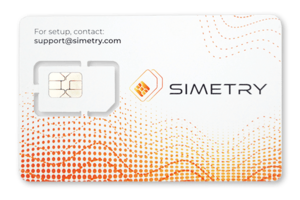How to simplify IoT cellular data

The sheer volume of data being created today can best be summed up by a Google executive who said, “There were 5 exabytes of information created between the dawn of civilisation and 2003. Now that much information is created every two days.”
Moving that much data requires more than just hard-wired connections, much of it depends on reliable, secure, and cost-effective cellular connectivity. However, outside of large enterprise users, major cellular carriers are often ill-equipped to meet the unique needs of modern IoT data-centric businesses. So, the emergence of IoT data management solution providers that allow small-to-medium- sized businesses to build and deploy their cellular connectivity infrastructure is proving to be a game changer.
Not only are IoT data users benefiting from a more streamlined process, at significantly lower costs, but they are also finding that a centralised and customisable IoT data management solution can enable them to scale up.
Cellular frustrations
Whether it is for automation, real-time data, video, analytics, asset management, telemetry, or SCADA, managing cellular data is a growing and frustrating issue for many businesses today.
Case in point, Stallion Infrastructure Services has a nationwide fleet of mobile surveillance trailers that provide security monitoring at construction sites, industrial facilities, retail stores, and other critical infrastructure. The trailers require uninterrupted data transmission to and from the cloud which is dependant on reliable cellular connectivity.
“Uptime is paramount!” says Cameron Simon, senior vice president of Industrial, Technology & Services with Stallion IS. “We were utilising all of the major cellular carriers which meant multiple agreements, support teams, account managers, billing dates, and various device hardware. It just became a major pain point for our operations.”
While working in a completely different industry, the story was very much the same for MagicTix. The company utilises RFID technology to load digital credits onto wristbands for events such as carnivals, fairs, or music festivals. At each ride, game, or food stand there is a cellular-connected scanner that deducts the credits from the user’s account, creating an improved customer experience.
“We had multiple clients, each with hundreds, or even thousands, of SIM cards,” explains Brian Meade, Vice President of MagicTix. “Keeping track of each account was a nightmare. At one point a scanner was stolen, and because we did not have real-time monitoring through our carrier, they ran up a $16,000 bill before we figured out it was missing and shut it off.”
Data complexities
One of the biggest issues for MagicTix, in Meade’s opinion, was that because they were not a top-tier user of data, they were not a high priority for cellular providers.
“We had over 2,000 lines, and they still treated us as if we had one,” adds Meade. “We told them that we’re only using these scanners as an IoT device. We only wanted data. Yet, the scanners would still receive phone calls and spam texts – which would run up our data bills. There wasn’t a lot of control.”
Simon admits that Stallion was eager to offload their cellular data management headaches to one of these providers.
“What we really needed was a one-stop, turnkey solution provider with the ability to assemble all these components as seamlessly, securely, and cost effectively as possible,” says Simon.
Meade at MagicTix was also desperate to find a better overall solution.
“We heard about the emergence of companies that were offering an IoT cellular data alternative,” adds Meade. “Now, we get just the cellular data we need without the telephony, without the throttling, and without the billing and logistics issues.”
Simplifying the IoT Experience
Recognising the myriad of problems IoT and data-dependant businesses were facing, these providers began bundling cellular data looking for ways to bridge the gap between what the major carriers were offering and what large cellular data users were looking for. This often-included features like private APNs (Access Point Name), content filtering, and secure bandwidth management.
By consolidating all the major carriers into a single high-speed internet throughput, these new carrier-agnostic providers were able to deliver real-time, high-speed, tier-one cellular data, while essentially eliminating the typical hassles.
“Our priority is to provide surveillance and monitoring, and end-to-end communications and connectivity solutions for our clients,” says Simon. “These combined services provide us with many layers of protection so we can avoid any failure points without worrying about managing data, devices, customer service and billing from multiple vendors.”
While every IoT data user has different needs, getting customised plans like connectivity, SIM deployment, network security, account management, support and billing from a single source can not only streamline the IoT experience but also enable scalability.
“We’ve grown from 2,000 to 4,000 devices this year and are planning to move into more events,” concludes Meade from MagicTix. “Taking data management off our plate has allowed us to focus on our core business and explore new opportunities which has facilitated our rapid growth.”
Comment on this article below or via X @IoTGN